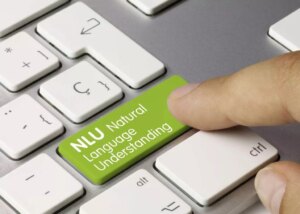These samples from users can be brought in and visualized in the Discover tab, along with information about the origin of the samples and how your model interpreted each sample. You’ll review them there, then add the ones you want directly into your intents in your training set to improve and grow your model. Twilio Autopilot, the first fully programmable conversational application platform, includes a machine learning-powered NLU engine.
It is not always feasible to know all possible literals when you create a model, and you may need the ability to interpret values at runtime. For example, each user will have a different set of contacts on his or her phone. It is not practical (or doable) to add every possible set of contact names to your entity when you are building your model in Mix.nlu. Mix.nlu will look for user sample data from the specified source and time frame. If there is data from the application in the selected time frame available to retrieve, it will be displayed in a table. Samples with invalid characters and entity literals and values with invalid characters are skipped in training but the training will continue.
NLU design tooling
In that case the other entity will be available in the list of entities and you will be able to annotate over or within the same text. More advanced text file upload of samples is available in Mix.dashboard and in the Optimize tab. The dashboard and Optimize file import allow you to apply Auto-intent to the samples. Samples can be added one at a time under a selected intent in the Develop tab. A collection method is related to how the set of possible values of the entity can be enumerated or defined.

Overfitting happens when you make changes to your training data that improve the validation set accuracy, but which are so tailored to the validation set that they generalize poorly to real-world usage data. If there are individual utterances that you know ahead of time must get a particular result, then add these to the training data instead. They can also be added to a regression test set to confirm that they are getting the right interpretation. You should also include utterances with different numbers of entities.
Entity Relationship Extraction – Examples
Multiple items to include can be selected in the Intents and Entities filters by clicking the available checkboxes. As with the Develop tab, when there are a lot of samples, the contents will be divided into pages. Similar to the Develop tab, controls on the bottom of the table let you navigate between pages and change the number of samples per page.
Been there, doing that: How corporate and investment banks are … – McKinsey
Been there, doing that: How corporate and investment banks are ….
Posted: Mon, 25 Sep 2023 07:00:00 GMT [source]
So far we’ve discussed what an NLU is, and how we would train it, but how does it fit into our conversational assistant? Under our intent-utterance model, our NLU can provide us with the activated intent and any entities captured. It still needs further instructions of what to do with this information.
The Cobus Quadrant™ Of NLU Design
Once the entity has been identified as referable, you can annotate a sample containing an anaphora reference to that entity. The literal “no cinnamon” would be annotated as [NOT]no [SPRINKLE_TYPE]cinnamon[/][/]. For example, “a cappuccino and a latte” would be annotated as [AND][COFFEE_TYPE]cappuccino[/] and a [COFFEE_TYPE]latte[/][/]. At runtime, Mix.nlu compares what the user says with the patterns defined in the different sub-rule branches. If the user utterance matches a pattern, this activates that branch. The code in the tag element of the branch assigns the appropriate value to the DP_NUMBER variable and returns this value.
You can tag sample sentences with modifiers to capture these sorts of common logical relations. Some types of utterances are inherently very difficult to tag accurately. Whenever possible, design your ontology to avoid having to perform any tagging which is inherently very difficult.
Living in a data sovereign world
Wordsets can either be uploaded and compiled ahead of time or uploaded at runtime. The ASRaaS or NLUaaS runtime can then use this data to provide personalization and to improve spoken language recognition and natural language understanding accuracy. Now that your model is ready, and rolled out to users in an application, you can look at what people say or type while using your application.
- If your language is not whitespace-tokenized, you should use a different tokenizer.
- Since food orders will all be handled in similar ways, regardless of the item or size, it makes sense to define intents that group closely related tasks together, specifying important differences with entities.
- The Try panel, as in the Develop tab, allows you to interactively test the model by typing in a new sentence.
- Businesses use Autopilot to build conversational applications such as messaging bots, interactive voice response (phone IVRs), and voice assistants.
- An entity with rule-based collection method defines a set of values based on a GrXML grammar file.
In short, prior to collecting usage data, it is simply impossible to know what the distribution of that usage data will be. In other words, the primary focus of an initial system built with artificial training data should not be accuracy per se, since there is no good way to measure accuracy without usage data. Instead, the primary focus should be the speed of getting ai nlu product a “good enough” NLU system into production, so that real accuracy testing on logged usage data can happen as quickly as possible. Obviously the notion of “good enough”, that is, meeting minimum quality standards such as happy path coverage tests, is also critical. You need to decide whether to use components that provide pre-trained word embeddings or not.
Advanced RAG Implementation on Custom Data Using Hybrid Search, Embed Caching And Mistral-AI
In order to bring user data from a deployed application into Discover, note that you need to have call logs and the feedback loop enabled for your specific Mix application. The data collected from applications can then be brought back in to Mix.nlu via the Discover tab. Training is the process of building a model based on the data that you have provided. There is an indicator on the row above the samples indicating how many samples are currently selected out of how many total samples. When you have not yet selected samples, this will show 0 / total samples. To choose a few samples on the present page, use the check boxes beside the samples to individually select the samples.

Two key concepts in natural language processing are intent recognition and entity recognition. Natural Language Understanding deconstructs human speech using trained algorithms until it forms a structured ontology, or a set of concepts and categories that have established relationships with one another. This computational linguistics data model is then applied to text or speech as in the example above, first identifying key parts of the language. Currently, the leading paradigm for building NLUs is to structure your data as intents, utterances and entities. Intents are general tasks that you want your conversational assistant to recognize, such as ordering groceries or requesting a refund. You then provide phrases or utterances, that are grouped into these intents as examples of what a user might say to request this task.
Tuning Your NLU Model
Verification of the sample data needs to be carried out for each language in the model, and for each intent. You can move the samples to either an existing intent, or a new intent that you create on the fly. This will help your model learn to not only interpret intents, but also the entities related to the intents. This section describes how to create and define custom entities, which are specific to the project.




